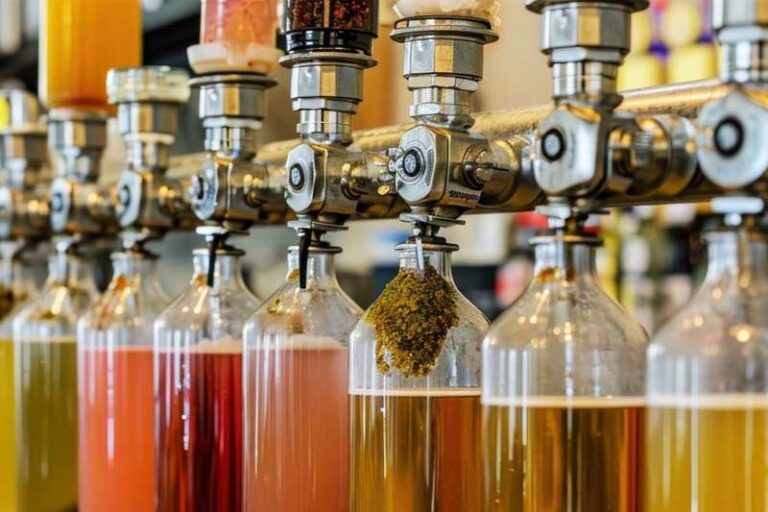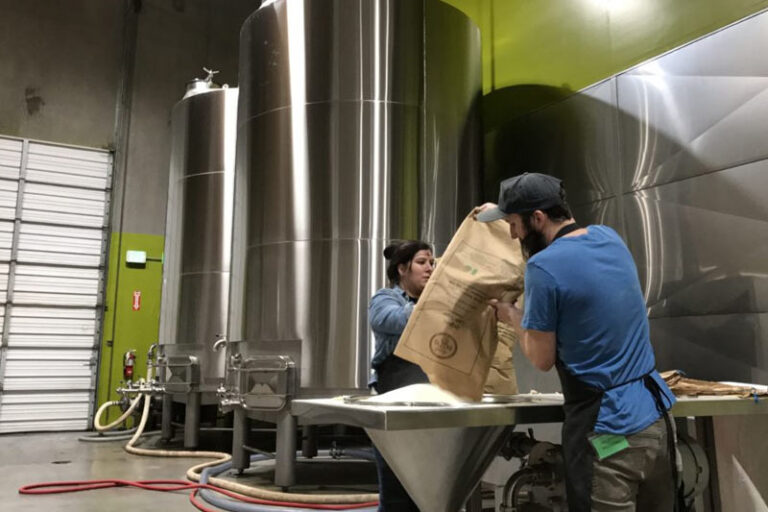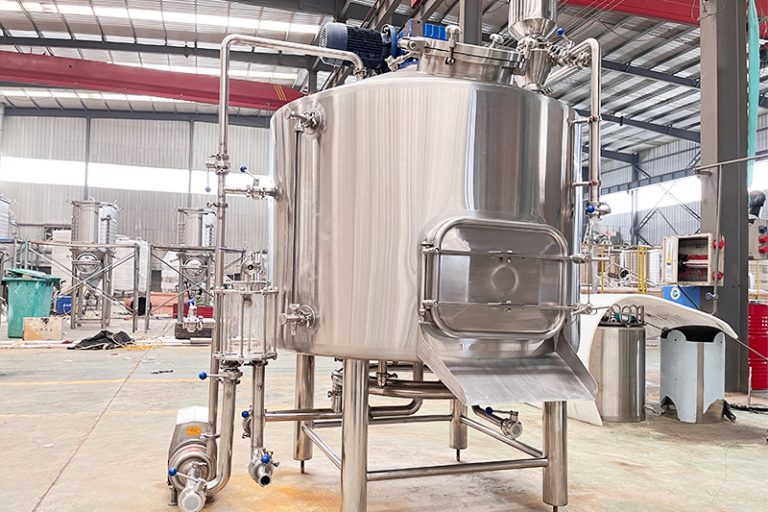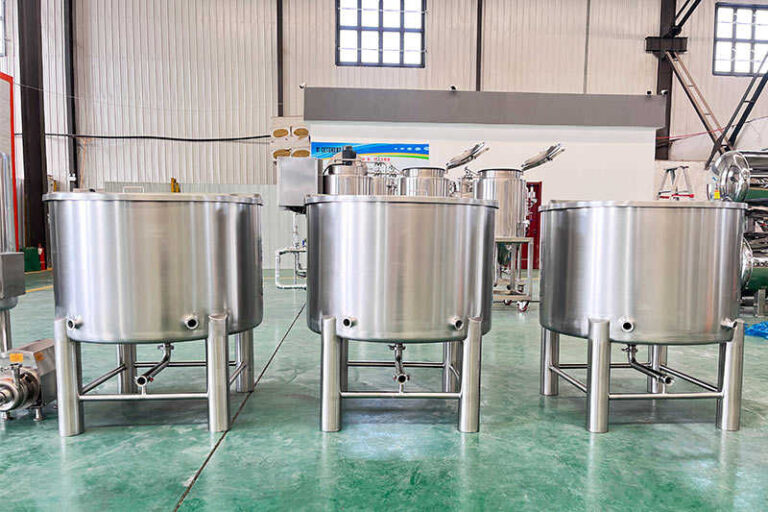Kombucha has become popular in the global beverage market in recent years. Faced with rapidly growing demand and industry competition, small kombucha factories are emerging. Compared with large factories, small factories have higher market flexibility, cost control capabilities, and product differentiation potential. However, faced with an endless stream of equipment choices, finding the most suitable kombucha brewing equipment has become key to steady development and maintaining product quality. This guide will analyze various aspects of small kombucha factories to help them make the best decision among multiple equipment options.
Positioning and characteristics of small kombucha factories
Production scale and target market
The common scale positioning of small kombucha factories is usually:
- 20-200 liters of fermentation per batch
- Monthly production ranges from hundreds to thousands of bottles or cans
- Targeting local markets, community consumption, coffee shop channels, or online sales
- Compared with large factories with 5000+ liters/batch, small factories pay more attention to flexibility and brand tone.
Value proposition and business strategy
- Emphasis on “handmade feel”, “small batches”, and “innovative flavors”
- Focus on customer interaction experience, such as “visiting the fermentation workshop” and “one-on-one tasting activities”
- Quickly respond to market trends and quickly test new recipes
Limited resources and risk control
- The budget is limited, and equipment investment needs to be cautious
- The staff is small, and the equipment is easy to operate and maintain
- The market changes quickly, and the risk of high equipment depreciation needs to be avoided

Core process flow and equipment for kombucha brewing
Kombucha production generally includes the following key links:
- Tea soup brewing and filtration
- Sugar water cooling and storage
- Fermentation in fermenter (SCOBY culture)
- Secondary seasoning and stirring
- Filling and capping
- Equipment cleaning and disinfection
Small kombucha brewing equipment selection guide
Automatic tea brewing equipment
- Functional requirements:automatic heating, quantitative tea brewing and sugar dissolution, precise temperature control (80-100℃), with filtering function.
- Small recommendation:150-300 liter stainless steel jacketed kettle with automatic slag discharge and temperature control system.
- Advantages:Improve process stability, reduce manual operation, and save time.
Cooling and liquid storage equipment
- Functional requirements:Quickly cool sugar tea to the appropriate fermentation temperature (20-25℃) to prevent oxidation.
- Small recommendation:Plate heat exchanger with an insulated liquid storage tank (200-500 liters).
- Advantages:Ensure the temperature of the fermentation environment is stable and effectively avoid contamination by bacteria.
Fermentation tank
- Functional requirements:corrosion-resistant, stainless steel, with a temperature-controlled jacket or circulating cooling, easy to clean.
- Small recommendation:50-300 liter conical bottom fermentation tank, equipped with temperature and pH sensors.
- Advantages:Supports multiple batches of parallel fermentation, convenient for adjusting fermentation time and process.
Secondary seasoning and mixing equipment
- Functional requirements:add juice and spices, mix evenly, and maintain a sterile environment.
- Small recommendation:small mixing tank with magnetic stirring or variable frequency motor.
- Advantages: improve product flavor diversity and flexibly adjust the formula.
Filling and capping equipment
- Functional requirements: avoid oxygen ingress, maintain fermentation activity, and accurate filling.
- Small recommendation:manual or semi-automatic negative pressure filling machine, capping or automatic capping machine.
- Advantages:ensure pressure in the bottle and extend the shelf life of the product.
Cleaning and disinfection system
- Functional requirements:Efficient and automatic cleaning of the inside of the equipment to avoid contamination.
- Small recommendation:Mobile CIP system that can connect multiple devices.
- Advantages:Ensure hygiene and safety and reduce manual cleaning time.
Intelligent monitoring and data collection
- Functional requirements: real-time monitoring of temperature, pH value, fermentation time, and data recording.
- Small recommendation:PLC control system or simple intelligent monitoring terminal.
- Advantages: ensure stable fermentation and facilitate quality traceability.

Key considerations when choosing kombucha brewing equipment
Matching capacity requirements with scale
Ensure that the equipment capacity matches the current production scale while leaving appropriate room for expansion to avoid resource waste or capacity bottlenecks caused by equipment that is too large or too small.
Process adaptability
The equipment must support the unique fermentation process and quality requirements of kombucha, including temperature control, PH monitoring, and aseptic operation, to ensure stable fermentation and consistent product taste.
Kombucha Brewing Equipment Ease of Operation and Maintenance
Consider the size and skill level of factory personnel and select equipment that is easy to operate, clean, and maintain to reduce failure rates and downtime.
Budget cost and cost performance
Comprehensively consider equipment procurement costs, operating energy consumption, and maintenance costs to ensure that the overall return on investment is maximized and avoid blindly pursuing high-end equipment that leads to excessive financial pressure.
Food safety and hygiene standards
The materials and structure of kombucha brewing equipment must comply with food-grade safety certification (such as FDA, CE, etc.), and be designed to facilitate thorough cleaning and disinfection to prevent microbial contamination.
Flexibility and scalability of kombucha brewing equipment
Prioritize modular design and compatibility, support multi-batch, small-batch production, and future process upgrades, and improve production flexibility.
Supplier reputation and after-sales service
Choose suppliers with mature technology and quick response to ensure smooth equipment installation and commissioning, as well as guaranteed subsequent maintenance and spare parts supply.

Advantages of equipment selection for small kombucha factories
- Small kombucha factories have relatively less financial pressure. Compared with large factories that need to invest a large amount of money at one time to purchase high-end, fully automatic equipment, small factories can choose cost-effective semi-automatic or modular equipment according to their actual needs and budgets, invest in stages, and reduce initial capital risks. At the same time, this incremental investment method is also convenient for gradually upgrading equipment as the business develops, avoiding idle funds or equipment depreciation.
- Small kombucha factories have greater production flexibility. Small kombucha factories usually focus on multi-variety and small-batch production, emphasizing flavor innovation and personalized product development. Choosing flexible and easy-to-adjust equipment can quickly switch between different recipes and fermentation batches to meet the diverse needs of the market. Modularly designed equipment is more suitable for small batches and multiple varieties, helping companies to quickly respond to changes in consumer tastes and enhance brand competitiveness.
- Small kombucha brewing equipment occupies a small area and is suitable for plant layouts with limited space. Compact equipment can make full use of limited production space, achieve a reasonable process layout, and improve production efficiency and ease of operation. This is especially important for entrepreneurial factories with high rental costs or limited area.
- Small kombucha factory equipment maintenance and operation are easier. The equipment is usually simple in design and easy to clean and disinfect, reducing the reliance on professional technicians. Operators can master it after simple training, which helps to reduce labor costs and equipment failure rates and ensure production continuity.
- Small kombucha factories are more likely to establish a close cooperative relationship with equipment suppliers. Suppliers can provide more personalized technical support and after-sales service, respond to the special needs of small factories promptly, help solve problems encountered in actual operations, and improve the stability of equipment operation.
Conclusion
Choosing the right kombucha brewing equipment is a key step for small factories to achieve efficient production and stable quality. Faced with a variety of equipment options, factories need to scientifically evaluate the functions, ease of operation, and maintenance costs of the equipment based on their production capacity requirements, process characteristics, budget constraints, and future development plans. Flexible and modular equipment solutions can help small factories maximize resource utilization efficiency while maintaining product innovation and quality. The technical support and after-sales service of equipment suppliers should not be ignored. They are important guarantees for smooth production operations. Through reasonable equipment selection and effective operation management, small kombucha factories can not only improve production efficiency and product competitiveness but also grow steadily in the fierce market and achieve sustainable development.


